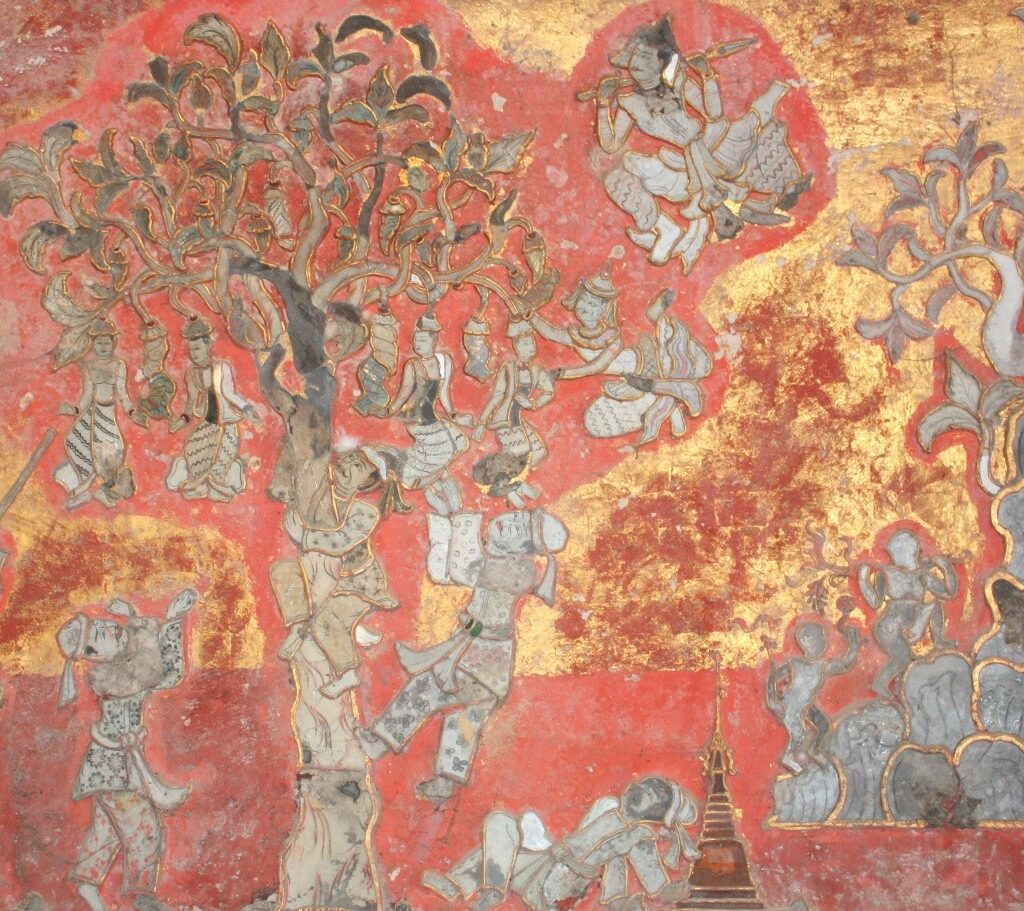Assorted holy men of Burma
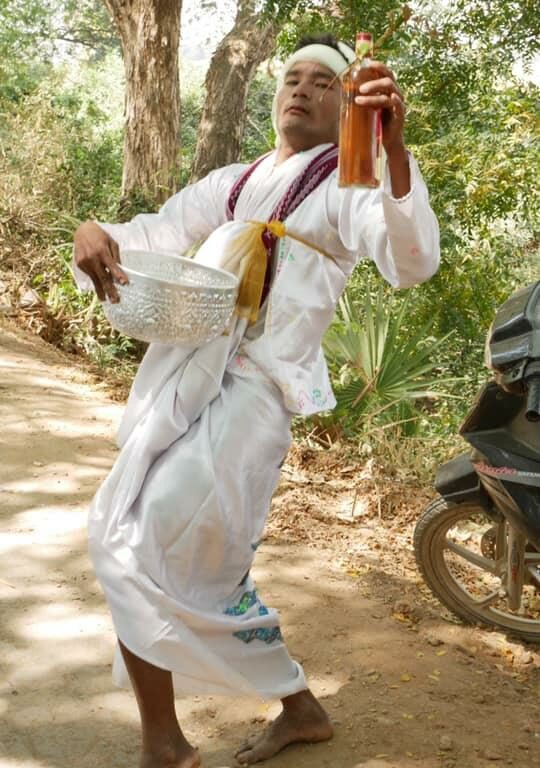
When foreigners come to Myanmar, they are confronted with people who stand out against the crowd by their special attire. Sometimes dressed in white, sometimes in brown, sometimes combined with a white blouse, then again in pink or auburn. Who are these people? In the following I`ll try to shed some light on them. I´ll limit myself to the men, even though there are quite some women among them.
Hermits (jathei.) are a real eye-catcher. When I saw one of them for the first time standing motionless for half an hour at Shwedagon’s eastern staircase, I was deeply impressed. I asked my friend U Hla Tin (pen name: Hla Htamein, with whom I wrote my first book on marionettes: https://oldburmahand.com/birmanisches-marionettentheater-2/) about them. He scoffed: “Tut – they’re all impostors!”. The name derives from the Sanskrit word rishi (wise man). In some places they occur in larger numbers, e.g. at the Golden Rock and Mt. Popa. They attract the public’s attention with their brown robes and strange headgear (dau’ cha). Especially when they practice their dignified walking meditation. From time to time they go astray in the big cities. Those I spoke to were all common men who, in their lay lives, were farmers, labourers etc., before they donned the brown hermit robe. When I asked them why they had not joined a monastic order, they replied that the discipline of the order was too strict for them. In addition, as monks, they could no longer do alchemical experiments (aggija. = work with fire). One of them, during a visit in the morning, showed me the ‘philosopher’s stone’ (badashin loun:) that he had made and he claimed to be able to fly with its help. He told me that he was travelling to America every day, his favourite city there was San Francisco. Unfortunately, he failed to make a demonstration! When I stopped by again in the afternoon, there was actually a note on his cell: “I’m in San Francisco! Will be back tomorrow!”. More about alchemy at MAUNG HTIN AUNG (Folk Elements in Burmese Buddhism)
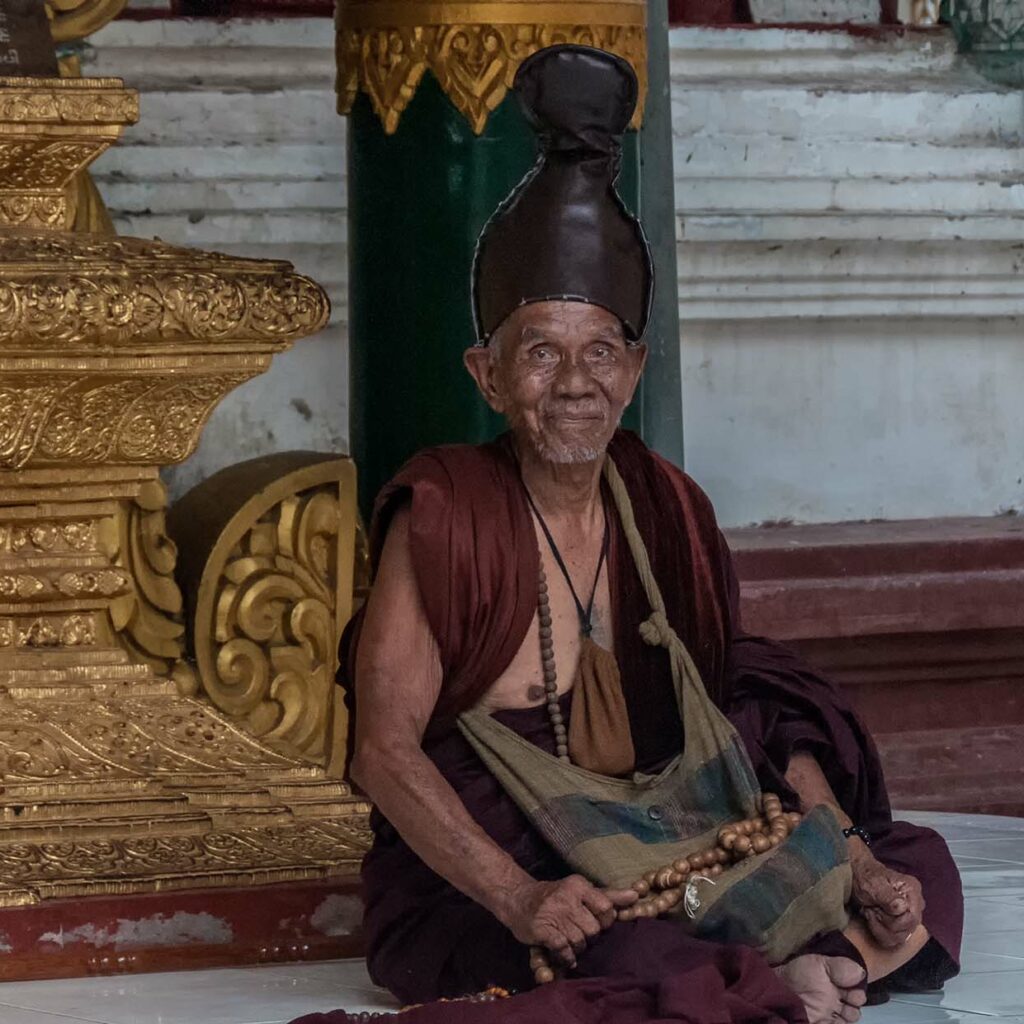
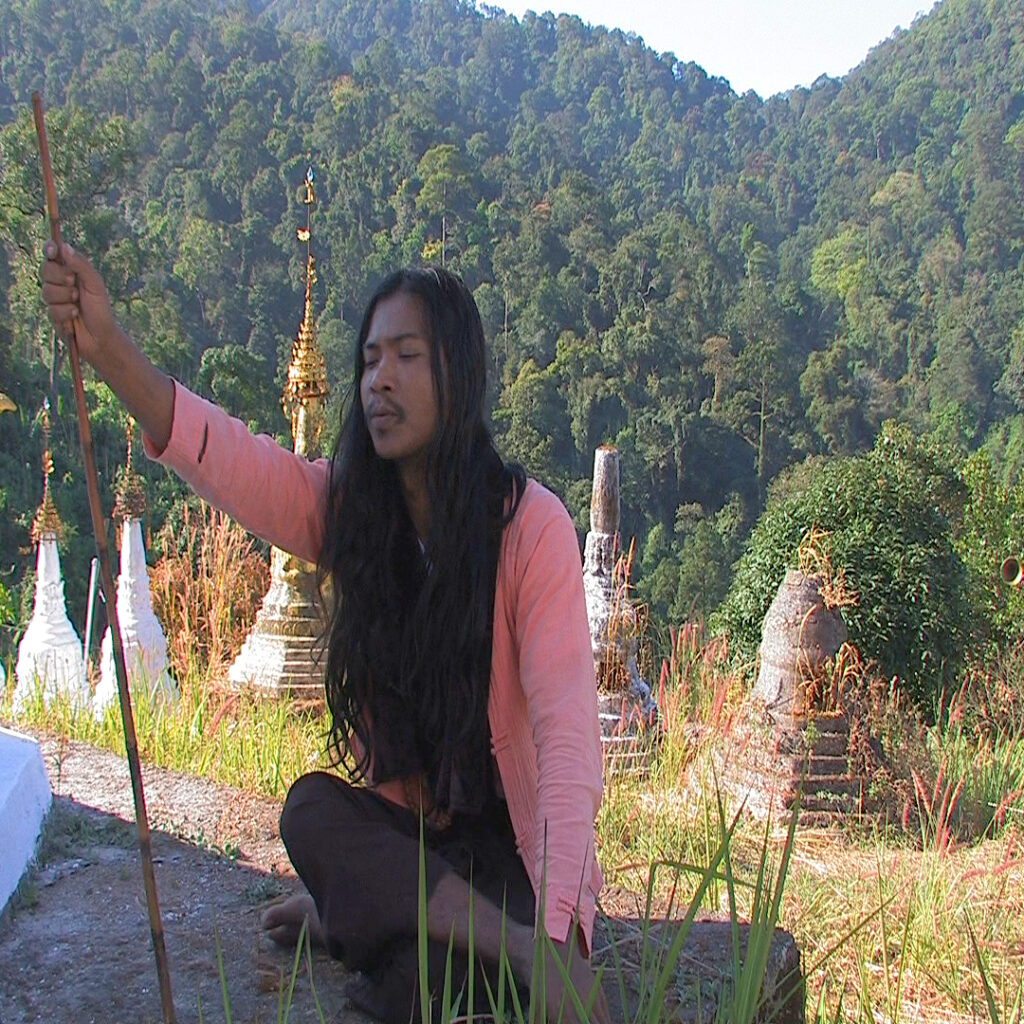
U Nanda is an old friend of mine. He lives in his hermitage at Yathe Taung (yathe = jathei., mountain = taung) near the Golden Rock. A rather decorative man with long, curly black hair who reminded me of Deep Purple’s keyboarder Jon Lord. He told me that he has many followers who visit him regularly and on whose alms he was living. In return, he offers spiritual comfort and advice and has knowledge of astrology, too. He used to be a jathei. but there came a day when it dawned on him that this path was not the right one for him. He then buried his alchemical tools and built a pagoda over the site. U Nanda disclosed to me that he was not comfortable with monastic discipline and therefore lived the life of an independent saint. He is a keen football fan and has a TV and recorder in his cell where he watches and records English Premier League matches. Meanwhile he owns an impressive collection of cassettes. I couldn’t help but feel that he was a bit embarrassed when I came to visit unexpectedly and caught him watching TV. My friend Roman TEUFEL erected a monument to him in his film ‘Reise in mein Land’ (https://www.swrfernsehen.de/laender-menschen-wandern/broadcastcontrib-swr-38884.html).
In Myanmar folk Buddhism, many people believe in so-called ‘accomplished magicians’ (bo do) who have achieved an immaterial existence. They are probably remnants of the tantric Buddhism (keyword: Ari monks) that was dominant in Bagan up to the time of Anawrahta (1044-1078). According to other sources, they did not appear until the last dynasty and its end in 1885. However, the cult of Upagupta (Burm.: Shin Upagou’, the lord of the Northern Ocean and rain-giver), which is very popular in Myanmar, definitely dates from the Bagan period. His statue is often seen in monasteries, where he is depicted in a pavilion floating on water. The two most famous bo dos are Bo Bo Aung and Bo Min Gaung https://en.wikipedia.org/wiki/Bo_Bo_Aung) https://en.wikipedia.org/wiki/Bo_Min_Gaung).
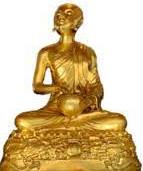
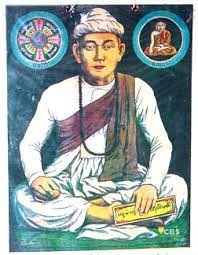
They are also sometimes referred to as wei’ zas or zo gjis – the terms sometimes get quite mixed up. Their wonderful appearance is reported again and again. They are believed to live in a mysterious world until they enter Nirvana after the descent of the next Buddha (maitreya). Statues of the wei’ za (derived from the Sanskrit word vijja = knowledge) Bo Bo Aung, dressed in the white garb of monastery helpers and a cap of the same color, can be found on many stupas and temples. It is said that he was a classmate of King Bodawhpaya and lived as a monk in Sagaing, where he found a magic spell on a palm leaf. Wei’zas acquire their supernatural abilities through magical arts such as alchemy, astrology, spells, but also through Buddhist meditation. Their powers are similar to those of a zo gji. (q. v. https://oldburmahand.com/en/hitler-and-burma). The center of Bo Min Gaung worship is at Mt. Popa, where his remains are said to be buried. It would be a mistake to think that wei’ zas no longer exist today. They still do, as the photo of the U Kaw Wi Da testifies.
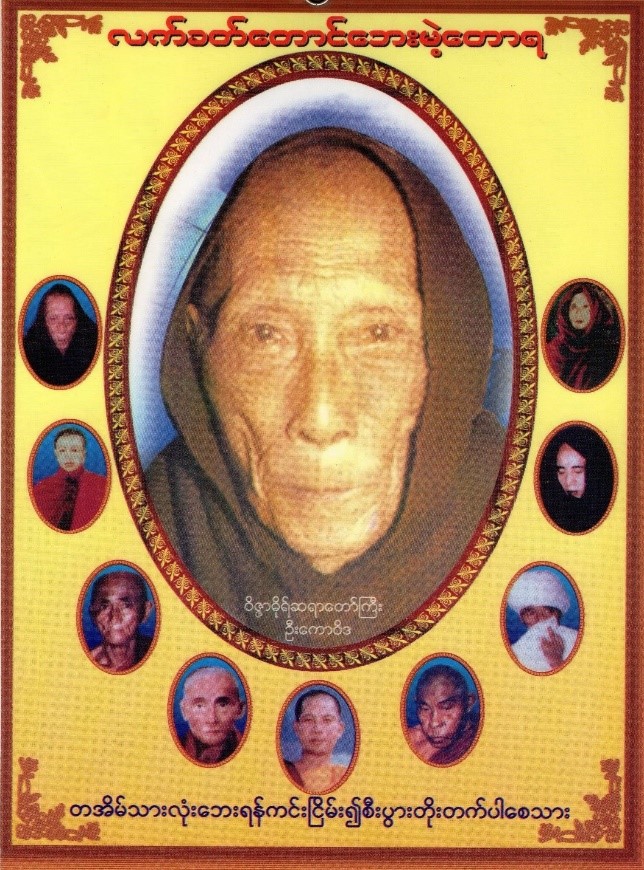
All dressed in red, zo gjis (derived from yogi* = a penitent who practices yoga) are mythical creatures who most probably emanated from alchemists. Depending on the element they are experimenting with, two types may be distinguished: iron zo gjis and mercury zo gjis. If their alchemistic experiments are successful, they find the ‘philosopher’s stone’ (badashin loun: or da’ loun), the touch of which can turn everything to gold. They can also travel through the air and perform other feats by putting this stone in their mouth (see above). However, that is not their objective: rather it is to become a zo gji!
In order to achieve this, the alchemist has to ‘pupate’ for seven days. During this time he is extremely vulnerable. In the drama of ‘Byatwi and Byatta’, which deals with the conquest of Thaton by Anawrahta, it is reported how this can go terribly wrong (KHIN MYO CHIT, Burmese legends, p. 79 f.).
However, if all goes well, they can fly and travel through solid ground, resurrect the dead and transform the fruit of the thu jaun tree into pretty young girls. However, those beauties decompose after three days, so that you have to pick a new one – what a nice male fantasy! A beautiful depiction can be found in the Shweyanbyay Temple near the town of Nyaungshwe on Inle Lake. Like the wei’ zas, they can live up to a million years, but least until the appearance of the future Buddha Maitreya. A famous Zo gji was U Po Win, who lived at Po Win Taung (on the west bank of the Chindwin near Monywa). The cave where he did his experiments can still be seen today.
*However, the zo gji has little in common with his Indian namesake. A telling example of Indian concepts being mixed up with pre-existing concepts of the Indianized peoples of Southeast Asia.
